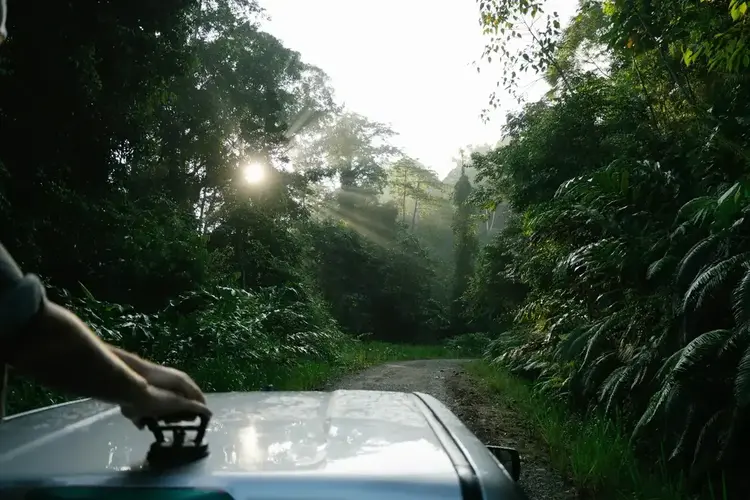Travel Insurance for Wildlife Adventures in Central & South America

Essential Travel Insurance Guide for Wildlife Enthusiasts | September 9, 2025
Last updated: September 9, 2025
This article is entirely independent and contains no sponsored content or affiliate links — it’s written to provide unbiased information for travelers.
Why Travel Insurance Is Essential for Central & South American Wildlife Adventures
Traveling to Central and South America for wildlife viewing – whether trekking through rainforests, hiking in the Andes, or exploring remote national parks – is an unforgettable adventure. It also comes with unpredictable elements. From medical emergencies on a jungle trail to a lost bag en route to your eco-lodge, unexpected mishaps can derail a trip. Travel insurance is a critical safety net for these journeys, providing financial protection and peace of mind. Below, we detail why wildlife enthusiasts should strongly consider travel insurance, the likely use cases and claims in these regions, what is (and isn’t) covered, and how the top travel insurers – including Allianz, AIG Travel Guard, and World Nomads – stack up in price and benefits.
The Case for Travel Insurance in Central & South America
Unpredictability and Remote Risks
Wildlife travel often means venturing off the beaten path. Remote rainforests, mountains, and rural areas may lack immediate medical facilities, and reaching help can be costly. If you suffer a serious injury or illness deep in the Amazon or high in the Andes, an emergency evacuation could cost well over $100,000 – an expense your regular health plan likely won’t cover abroad. Travel insurance fills this gap by covering medically necessary evacuations and transport to adequate hospitals or even back home, up to the limits of your plan[1]. In fact, many domestic health insurers (including U.S. Medicare) do not pay for hospital or doctor bills outside your home country[2]. Having travel medical coverage ensures you won’t have to choose between your well-being and a hefty bill if the “unthinkable” happens miles from civilization.
Common Mishaps and Expenses
Even routine travel headaches can be amplified in unfamiliar environments. For example, flights in Central/South America can be delayed by tropical storms or volcanic activity, and baggage can get misrouted when connecting through multiple airports. Travel insurance can reimburse you for these travel mishaps – from trip delays and missed connections to lost luggage[1]. If an airline loses your checked bag containing your hiking boots and gear, a travel insurance policy will help pay to replace your trekking equipment and essentials (up to the policy’s limits). Similarly, if your bag is only delayed, you can be reimbursed for buying clothes and toiletries to tide you over[2]. These protections can make an otherwise trip-ruining incident manageable.
Trip Cancellation or Interruption
Importantly, travel insurance protects the money you invest in your trip. Wildlife trips often involve nonrefundable tours, lodge reservations, or permits (e.g. for jungle treks or wildlife safaris). If you have to cancel last-minute due to an unforeseen illness or injury – say you sprain an ankle a week before departure – you could lose your entire trip cost. Trip cancellation coverage can reimburse your prepaid, nonrefundable expenses if you must cancel for a covered reason like your illness or a family emergency[3][4]. In fact, experienced adventure outfitters note that injuries or illnesses in the days right before departure are among the most common insurance claims[4]. Travel insurance also covers trip interruptions or delays that occur during your journey. For instance, if a sudden strike or a landslide disrupts your plans, or if your rental car breaks down and makes you 12+ hours late to the next destination, your policy may cover the lost tour days or extra costs incurred (as long as the cause is a covered reason)[2][3]. Without insurance, these scenarios could mean paying out-of-pocket for new tickets or forfeiting the money for activities you miss.
Medical Emergencies Abroad
Perhaps most crucial for wildlife enthusiasts is the medical coverage. Trekking and outdoor exploration carry the risk of injury – whether it’s a twisted ankle on a remote Bolivian trail or a serious fall on a Patagonian glacier hike. “Accidents can happen to anyone… If you twist your ankle, fall, and get hurt while doing the El Choro trek in Bolivia, you may then wish that you had travel insurance for South America,” one travel insurer warns[3]. Travel insurance typically covers hospital and doctor bills for sudden illnesses or accidents abroad, which is vital since quality healthcare might require evacuation to a major city. Good policies include at least $100,000 in emergency medical coverage and often $300,000+ for emergency evacuation[5]. In addition, insurers provide 24/7 assistance hotlines with multilingual support. This means if you’re in a remote village with a medical emergency, you can call for help to locate a suitable clinic or arrange a medical evacuation immediately. They can even help communicate with local doctors on your behalf if there’s a language barrier[3]. Such support can be life-saving and also relieves you from navigating a crisis alone in a foreign country.
Personal Liability and Responsibility
Another aspect to consider is personal liability – if you accidentally injure someone or damage property, some travel insurance plans will cover legal costs or damages[6]. More broadly, having insurance is about responsibility to both yourself and the host country. As one wildlife travel organization notes, if you become injured or sick and cannot pay for your care, it could impact the local community’s resources; carrying insurance ensures “you have a good backup plan to protect you and your hosts if things go awry”[2].
What’s Covered – and What’s Not – for Wildlife Travelers
Travel insurance policies are comprehensive, but it’s important to understand their scope and limits. Here are the key benefits relevant to wildlife travel, along with notable exclusions:
- Emergency Medical Treatment & Evacuation: Coverage for doctor and hospital bills in case of sudden illness or injury, plus medical evacuation or repatriation if needed. For example, if you suffer a venomous snake bite or a serious injury in a remote rainforest, insurance covers getting you to the nearest appropriate hospital – potentially via air ambulance – and even transport back home if medically necessary[1]. Not covered: Routine medical checkups, preventive vaccinations, or any non-emergency care is generally excluded. Also, pre-existing medical conditions are typically excluded unless you purchase a policy that waives this exclusion (usually by buying insurance shortly after your first trip payment)[2].
- Trip Cancellation & Interruption: Reimburses your prepaid trip costs if you must cancel or cut short the trip due to covered reasons (e.g. your illness, family member’s death, severe weather, etc.). For instance, if you come down with a serious flu or your companion is hospitalized right before the trip, insurance can refund your nonrefundable flight, hotel, and tour costs[4]. If a hurricane or political turmoil forces you to evacuate mid-trip, interruption coverage can pay for your lost portion of the trip and any extra transport home. Not covered: Changing your mind or deciding not to travel generally isn’t covered. (Some insurers offer a Cancel For Any Reason upgrade at extra cost, which partially reimburses cancellation for any cause, but this is an optional add-on[1]. Also, cancellations due to known circumstances (like a planned strike announced in advance) might be excluded.
- Travel Delays & Missed Connections: Covers meals, lodging, and alternate transport if you’re stuck due to flight delays or missed connections beyond your control. For example, if a delayed flight causes you to miss the only weekly bush plane to a rainforest lodge, travel insurance can reimburse your extra hotel night and rebooking fees. Some policies even offer fixed inconvenience payments (e.g. Allianz’s SmartBenefits pays $100 per traveler for covered delays over a certain hours threshold)[1]. Not covered: Minor delays that don’t meet the policy’s minimum hour requirement, or costs that an airline already compensates you for, won’t be reimbursed.
- Lost, Delayed, or Stolen Baggage: Insurance will pay to replace your belongings if your luggage is lost or stolen, and cover essentials if baggage is delayed. This is especially important for wildlife photographers or birders carrying costly equipment. Policies typically reimburse up to a set limit per bag or item. For instance, World Nomads’ Standard plan insures up to $1,000 of your gear from theft or loss (and the Explorer plan up to $3,000)[5]. If your checked bag disappears en route to Colombia and all your hiking gear is gone, you can file a claim to recoup the cost of boots, outdoor clothing, and other essentials. If your bag is only delayed, you can get reimbursed for interim purchases like toiletries and a change of clothes. Not covered: Negligence or unattended items. Importantly, insurers expect you to take reasonable care of your possessions. If your bag is stolen because it was left unattended or, say, you were pickpocketed while intoxicated and not vigilant, a claim could be denied as “preventable” loss. High-value items may also have sub-limits (e.g. electronics might be capped per item), so travelers with pricey camera lenses might consider supplemental coverage. Always file a police report for theft – it’s required for a claim[3].
- Emergency Assistance Services: Beyond reimbursements, a huge benefit of insurance is access to 24/7 assistance. You can call your insurer’s emergency line for help with all sorts of issues: finding an English-speaking doctor, replacing a lost passport, or even getting advice if you encounter political unrest. For example, if you lose your passport in Peru, your insurer can guide you to the nearest consulate and explain what documents you need. (They typically won’t pay the government fees to replace the passport – those costs are on you – but the guidance is invaluable[5]. Likewise, assistance services can help arrange medical evacuation quickly without you having to upfront massive payments – they coordinate and pay directly, so you’re not stuck negotiating with air ambulance companies during a crisis[2]. Not covered: The insurance company might not cover things like the actual passport replacement fee or cash lost/stolen. Assistance services for non-medical needs (like concierge help or translation services) are usually included as a perk rather than an insured benefit, so usage may be subject to some limits.
In summary, travel insurance offers broad protection for the main perils wildlife travelers face: health emergencies, cancellations, travel snafus, and property loss. It does not cover every possible situation – extreme adventure activities (e.g. high-altitude mountaineering above a certain elevation, base-jumping, etc.) are often excluded or require special add-ons, and reckless behavior or simply changing your plans is on you. By reading your policy and choosing one suited to your activities (for example, ensuring your plan covers trekking up to the altitudes you’ll reach), you can avoid surprises. Many standard travel insurance plans do cover typical “soft adventure” activities like hiking, wildlife safaris, or kayaking, but might exclude truly high-risk sports[5] – so pick a plan aligned with your itinerary.
Top Travel Insurance Providers: Plans, Prices, and Perks
Dozens of companies offer travel insurance, but a few stand out for international wildlife travel. Here’s a look at three top providers (Allianz, AIG Travel Guard, and World Nomads), how they differ in coverage and cost, and what they offer for travelers from the U.S. or Canada (with many options also open to Europeans):
Allianz Global Assistance (Allianz Travel)
Overview: Allianz is one of the world’s largest and most reputable travel insurers, known for a reliable claims process and diverse policy options. They offer 10+ plans in the U.S., including single-trip plans at Basic, Prime, and Premier levels and annual multi-trip plans. Allianz plans are comprehensive, covering trip cancellation, interruption, medical emergencies, evacuation, baggage, and more. Notably, children 17 and under are covered for free on certain family-oriented plans (like the OneTrip Prime plan) when traveling with a parent, which can make Allianz very cost-effective for family wildlife trips. Allianz does not impose age limits on coverage – travelers of any age can be insured[2][5][1][7].
Benefits: Allianz’s higher-tier plans are excellent for adventure travelers going to remote locales. For example, their OneTrip Premier plan includes up to $1,000,000 in emergency medical transportation coverage, recognizing the potential high cost of evacuating from the wilderness. They also have an epidemic coverage endorsement, meaning certain COVID-19 related losses are covered, and a convenient TravelSmart mobile app for emergency resources and filing claims on the go. Allianz is frequently praised for its customer service – you can reach a 24/7 multilingual hotline, and travel experts note that Allianz “answers the phone” and is very responsive in emergencies. They even offer pre-existing condition waivers on some plans (covering medical issues you already have) if you purchase shortly after your initial trip booking[2][1][7].
Cost: Allianz premiums are generally in the mid-range. For a young adult traveler, costs might range around $4–$9 per day of coverage, depending on the plan level. While not the absolute cheapest, the robust coverage and service provide good value. Furthermore, frequent travelers can save with annual plans covering unlimited trips (each up to 45 days) for one fixed price. This is ideal if you plan multiple wildlife trips in a year[2][5].
Downsides: Allianz plans tend to be less customizable – they come as pre-set packages (Basic, Prime, Premier) with defined coverage limits. You can’t add many extra riders beyond perhaps rental car damage. Also, one quirk: Allianz will assist you if you lose your passport abroad by guiding you through replacement steps, but their standard plans won’t reimburse the passport replacement fee itself (some other insurers do cover that cost). Additionally, Allianz does not offer a “Cancel For Any Reason” upgrade, so if that flexibility is important, you’d need to look at other providers. Overall, Allianz is a top choice for its reliability and breadth of coverage – especially suited for families and those going deep into nature who want high medical and evac limits[5][7].
AIG Travel Guard
Overview: Travel Guard, a subsidiary of AIG, is known for flexible and customizable travel insurance. Rather than a one-size-fits-all policy, Travel Guard lets you build a plan to your needs with various add-ons and optional coverages. They offer three base levels – Essential, Preferred, and Deluxe – which you can then tailor. This can be great for experienced travelers who know exactly what coverage they need (for example, you could add extra medical coverage or adventure sports coverage as needed). Travel Guard is often highlighted as one of the best options for covering pre-existing medical conditions, as their plans allow waivers if you buy early and they tend to accommodate those with health issues traveling[5][8].
Benefits: One standout perk is Travel Guard’s coverage for travel supplier default – if a tour operator or lodge goes bankrupt or “defaults” and cannot deliver services, Travel Guard can reimburse you, a feature not commonly found in other policies. For wildlife enthusiasts booking niche tours or local guides, this offers peace of mind. They also offer uncommon bundles like a “pet bundle” (useful if you’re bringing a pet on your trip) and “wedding bundle” for destination wedding travel, as well as an optional Cancel for Any Reason upgrade on certain plans. In terms of core coverage, Travel Guard plans cover the standard trip cancellation, interruption, medical, baggage, etc., and they have an upgrade for rental car collision coverage as well. Like Allianz, AIG Travel Guard provides 24/7 assistance and has no strict age limits for coverage. They insure travelers of all ages and even include coverage for one child under 17 per insured adult at no extra cost on some plans[5][7].
Cost: Travel Guard’s pricing can vary widely because of the customization. Their basic Essential plan can be very price-competitive for budget travelers, while a deluxe plan with all the bells and whistles can be on the higher end. In one comparison, a month-long policy for a young traveler ranged roughly $6–$12 per day depending on the level of coverage chosen. Travel Guard is sometimes a tad cheaper than Allianz for similar coverage, but you must compare carefully – adding a lot of options can increase the price. The ability to select only the coverage you need can make it cost-effective (for example, you could opt out of baggage coverage if you’re backpacking light, or add extra medical if you’re doing remote trekking)[5].
Downsides: The flipside of flexibility is complexity. With so many options, choosing the right Travel Guard plan can be confusing for some. There are reports that their claims filing process is less user-friendly, with longer processing times and more paperwork, which has led to some mixed customer reviews. Travel Guard’s wide array of plans might also not all be available in every state or country (for instance, certain upgrades like Cancel for Any Reason can’t be sold in New York). Nonetheless, for travelers with specific needs – like those with pre-existing conditions, or those seeking CFAR coverage – Travel Guard is a top contender. Just be prepared to read the fine print and possibly wait a bit longer on claims decisions (though they do eventually pay, with one travel advisor noting the company does follow up to confirm when checks are mailed out[5].
World Nomads
Overview: World Nomads is a favorite among backpackers, wildlife photographers, and adventure travelers. This insurer is designed by and for adventurers, and is recommended by travel brands like Lonely Planet and National Geographic. World Nomads stands out for covering a very broad range of adventurous activities by default – over 200 activities in more than 130 countries– which is perfect for a wildlife enthusiast who might be hiking, kayaking, or doing other outdoor pursuits. They offer two main plan levels for U.S. and Canadian travelers: Standard and Explorer (and in some regions a higher Epic plan). Both include trip cancellation, interruption, medical (with solid coverage limits), baggage, and evacuation coverage. The Explorer plan simply has higher limits and covers more extreme sports (for instance, scuba diving to greater depths, caving, or paragliding) and higher coverage for electronics and rental car damage[5].
Benefits: For wildlife trips, World Nomads is attractive because even the Standard plan automatically covers many outdoor activities that some other insurers classify as “hazardous” and exclude. You can check their list to ensure your planned activities (like a multi-day high-altitude trek or wildlife safari on foot) are covered – chances are, they will be. They also shine in coverage for personal gear: the Standard plan insures up to $1,000 in electronics or gear, and the Explorer up to $3,000, which is great if you’re toting camera equipment. World Nomads allows flexibility that many others do not: you can purchase or extend coverage while already traveling, and you don’t need to have a round-trip ticket (open-ended travel is possible). This is ideal for long-term travelers touring Latin America for months. The company provides 24/7 emergency assistance and even offers some unique extras like a pre-trip online doctor consultation service for advice on vaccines or altitude sickness meds. For Americans or Canadians, World Nomads policies are underwritten by reputable insurers (like Nationwide or AIG), so behind the hip branding is solid backing.[3][5]
Cost: World Nomads is generally priced competitively for the coverage it offers. For a young adult, the Standard plan might cost around $4 per day, and the Explorer around $7 per day for a month-long trip. Premiums can be higher if you’re older; one analysis found that older travelers might actually get better rates with World Nomads compared to some competitors. There is an upper age limit (usually around 70 years old maximum) for buying a policy, which means it’s geared more toward young and middle-aged travelers. European travelers have access to World Nomads as well, though plan structures might differ slightly by country[5][9].
Downsides: World Nomads’ biggest limitation is the age cap – if you’re over 70, you’ll need to look at other insurers. Additionally, while their coverage is broad, their customer service and claims reviews are mixed. Some customers praise their support, but others report slow claim processing or more scrutiny on claims (Trustpilot rating around 3.5/5). This could be due to the high number of adventure claims they handle. It’s advisable to document everything well (police reports, receipts, doctor’s notes) to smooth out any claims. World Nomads also does not offer as many plan customization options – you essentially pick Standard or Explorer – so if you need a particular benefit tweak, you might not have that flexibility. However, for most wildlife travelers, those two options cover the necessary bases[5].
Conclusion
Savvy wildlife travelers from the US, Canada, or elsewhere should view travel insurance as essential gear, just like a good pair of hiking boots or binoculars. For a relatively modest cost (often just a few dollars per day), you buy peace of mind and substantial financial protection. The jungles, mountains, and savannas of Central and South America are thrilling but unpredictable – insurance ensures that when surprises happen (be it a sudden injury, stolen camera, or cancelled flight), you won’t have to bear the burden alone. As you plan your trip, compare the top providers’ plans to find one that fits your needs. Whether you choose a comprehensive package from Allianz, a customizable policy from Travel Guard, or an adventure-ready plan from World Nomads, you’ll be investing in your safety and your trip’s success. With travel insurance in your back pocket, you can focus on enjoying the wildlife and wonder of your destination, knowing you’re covered for the “what-ifs” along the way.
References
📸 Related Resources
- Visit our comprehensive travel guides for Costa Rica, Panama, and Peru.
About the Author: Michael Steinman is a web developer, wildlife photographer, and field naturalist specializing in reptiles and amphibians. Read more →
❓Frequently Asked Questions on Why Wildlife Travelers Need Travel Insurance Abroad
-
Do I really need travel insurance for a wildlife trip in Central or South America?
Yes, I honestly and wholeheartedly recommend travel insurance. Wildlife travel often involves remote areas with limited medical care. Insurance covers medical emergencies, evacuations, cancellations, and lost gear.
-
What are the most common travel insurance claims for wildlife enthusiasts?
Typical claims include medical treatment after hiking injuries, trip interruptions from weather or strikes, lost baggage, and delayed flights.
-
Does travel insurance cover emergency evacuations from remote areas?
Most comprehensive policies include evacuation to the nearest suitable hospital and sometimes repatriation. Allianz, for example, covers up to $1,000,000 in transport.
-
How much medical coverage should I have for a trekking trip?
Experts recommend at least $100,000 in medical coverage and $300,000+ in evacuation coverage for remote travel in Central or South America
-
Which travel insurance companies are best for wildlife travelers?
Allianz (reliable coverage, family-friendly), AIG Travel Guard (customizable plans), and World Nomads (great for adventure travelers) are strong choices.
-
Does travel insurance cover stolen camera gear or binoculars?
Yes, but with limits. Policies reimburse lost or stolen belongings, though high-value items like cameras may have per-item caps. Supplemental coverage may help.
-
Are pre-existing medical conditions covered?
Some plans cover them if you purchase insurance soon after booking and meet the waiver requirements. Otherwise, pre-existing conditions are usually excluded.
-
Can I buy travel insurance after I’ve already left home?
Yes, some providers like World Nomads let you purchase or extend coverage while already traveling, which is ideal for long wildlife tours.
-
Does travel insurance cover political unrest or natural disasters?
If events like strikes, hurricanes, or earthquakes force you to cancel or interrupt your trip, coverage usually applies — but only if these are listed risks.
-
Is travel insurance more expensive for older travelers?
Yes, premiums rise with age. Some providers (like Allianz) cover all ages, while others (like World Nomads) have caps, usually around 70 years old.





